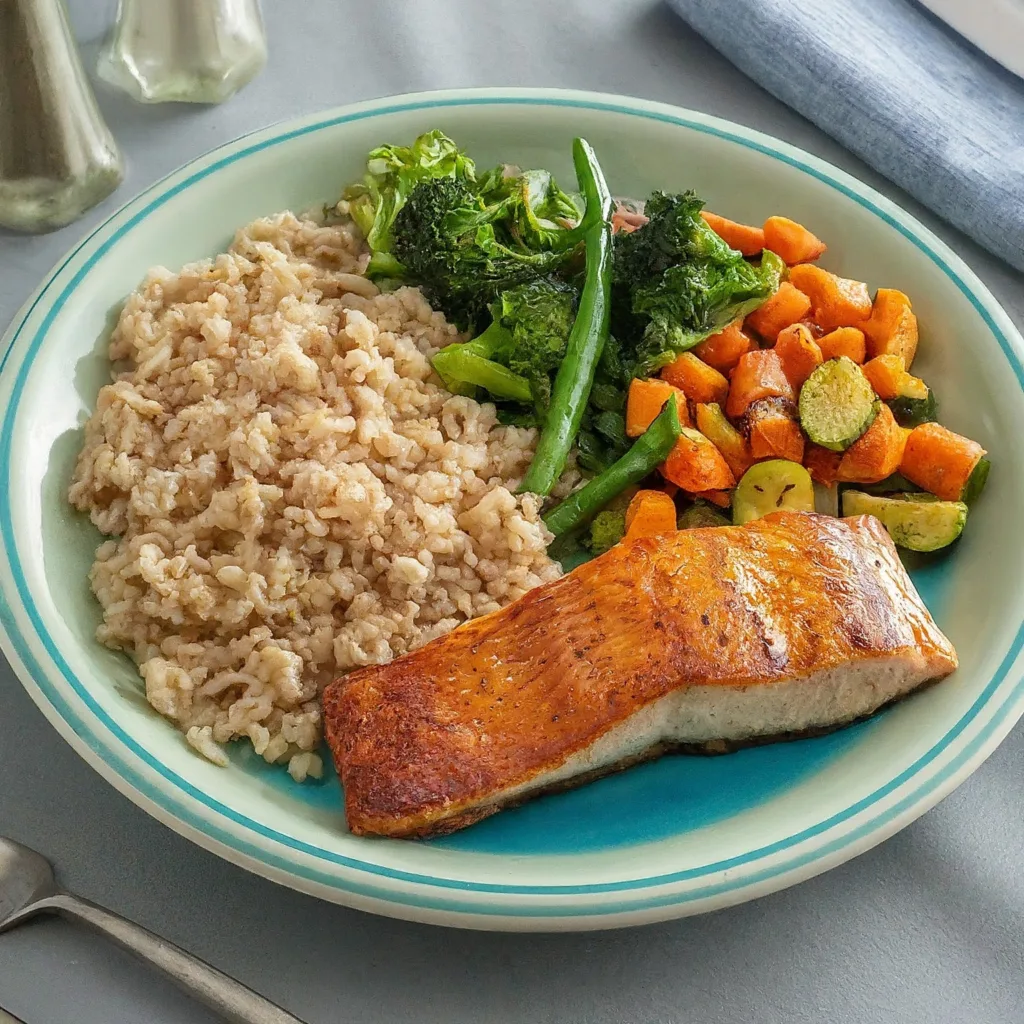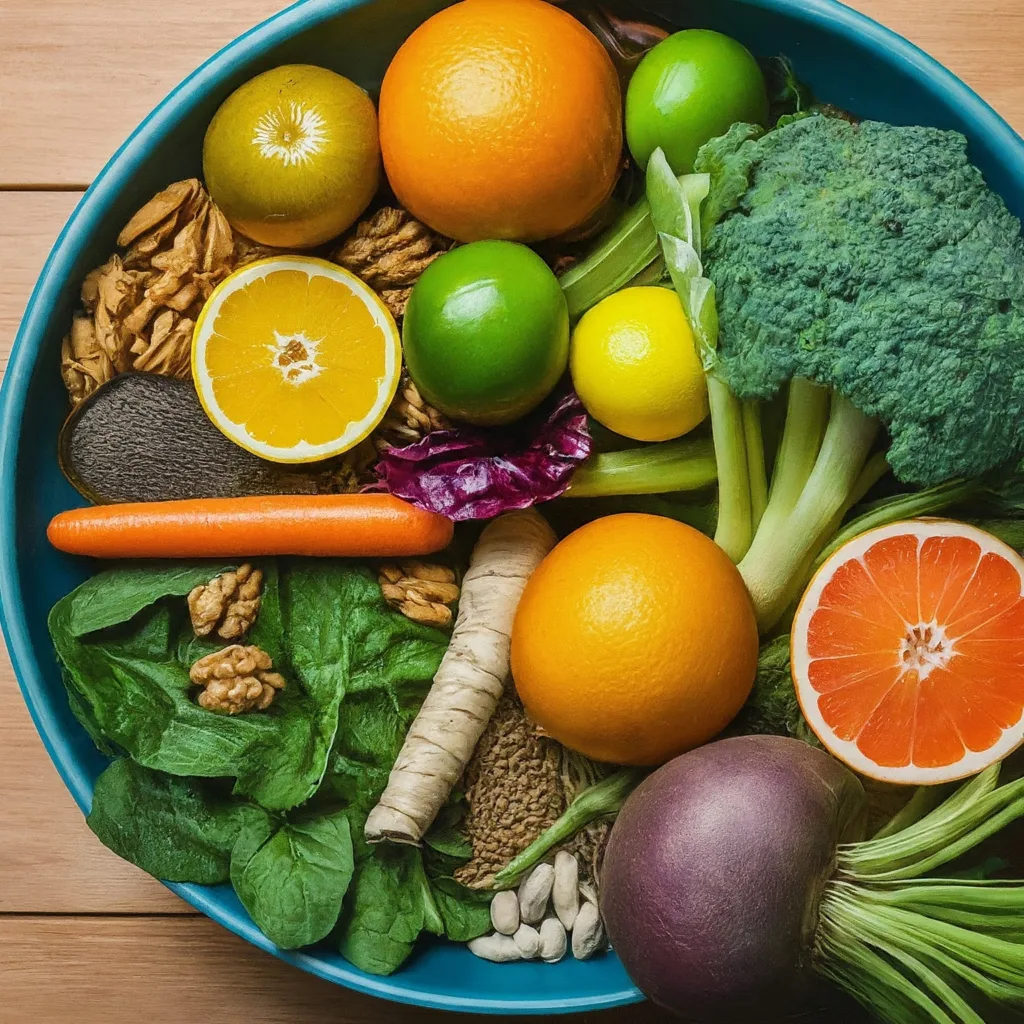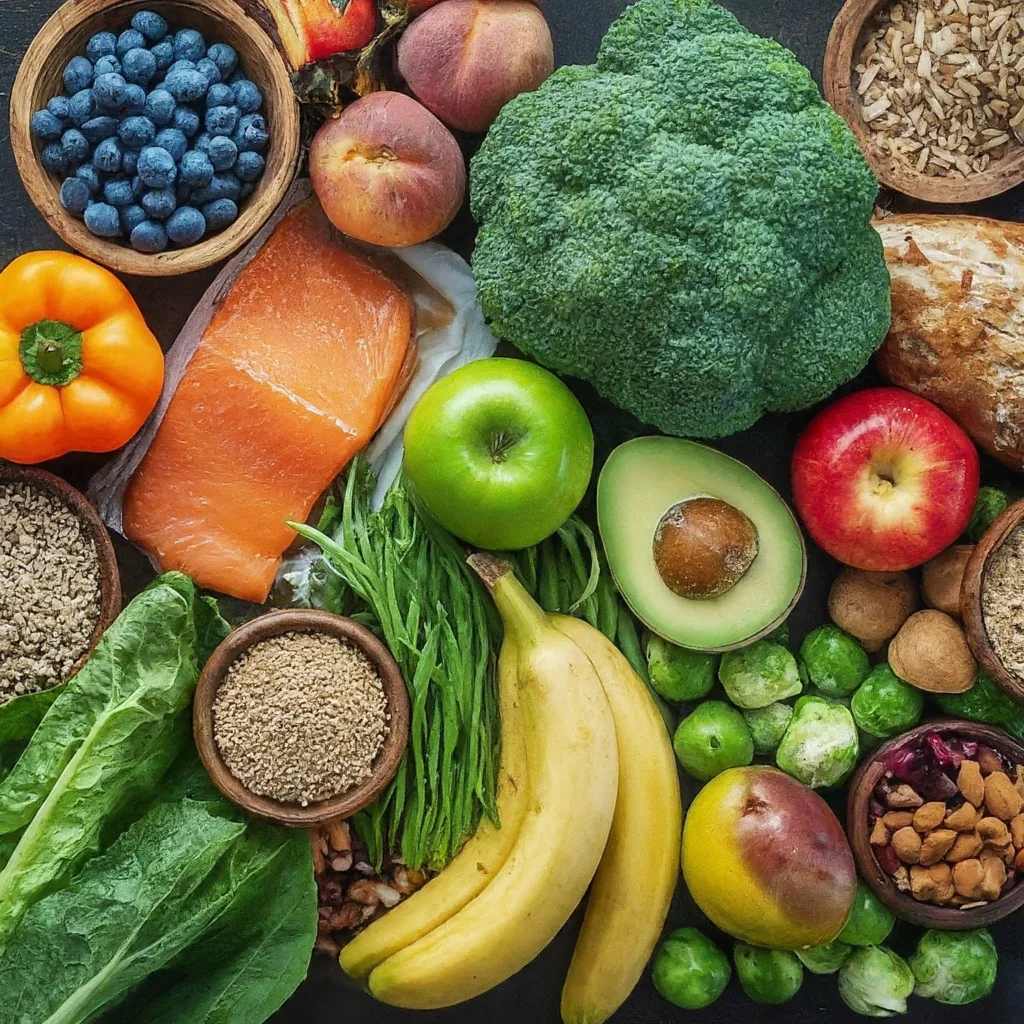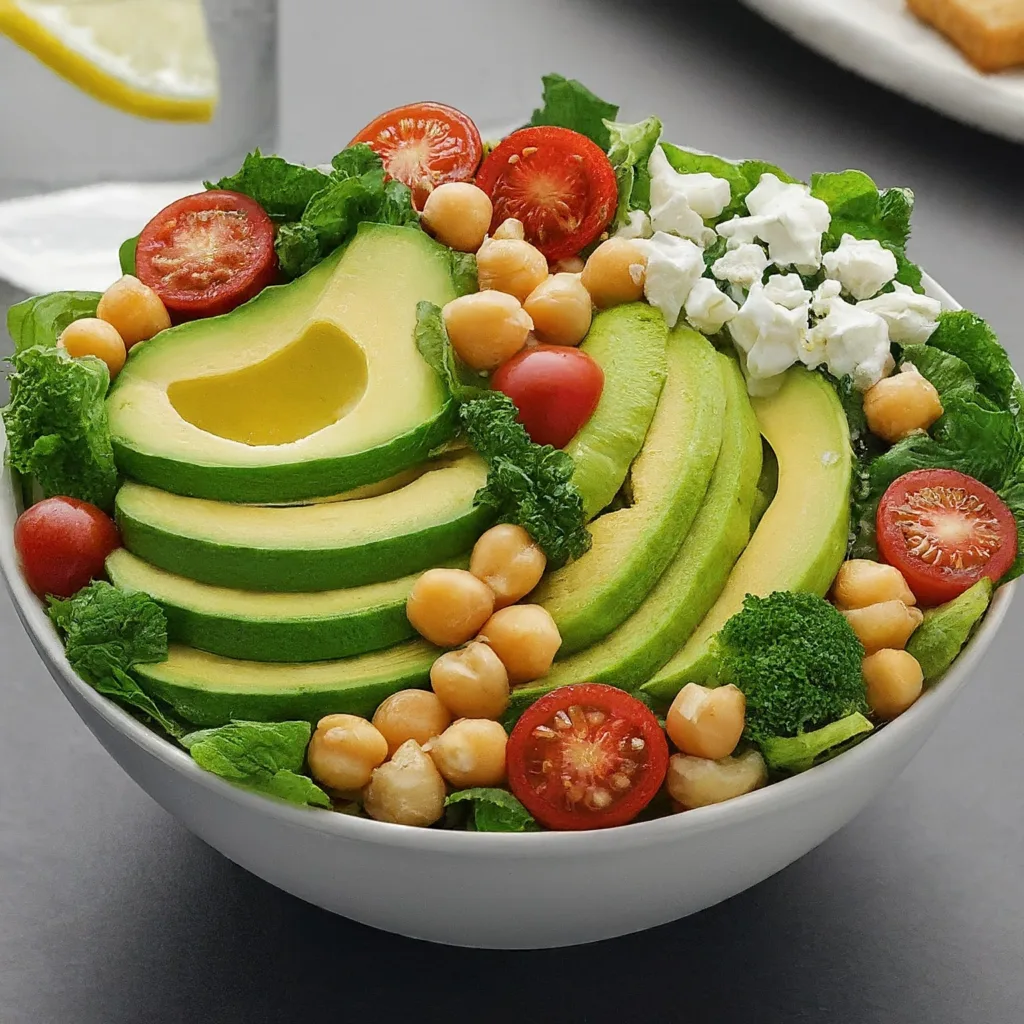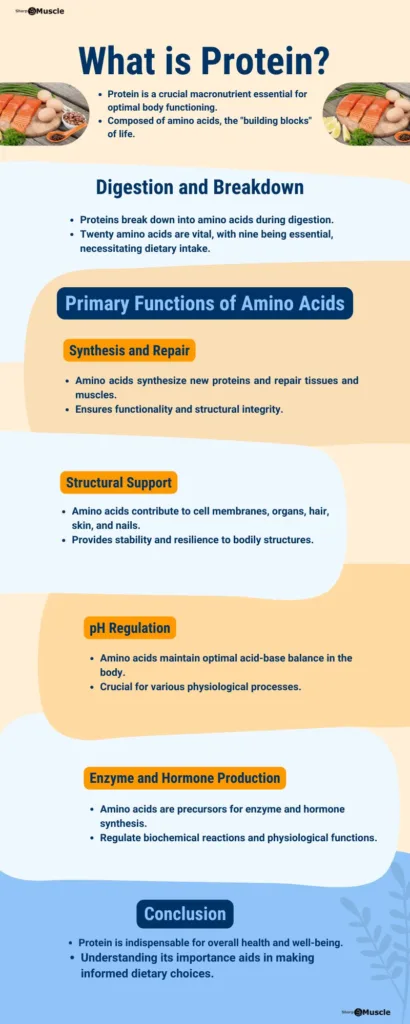Begin your journey towards achieving fitness goals with an effective dieting plan. In this comprehensive guide, we’ll delve into the principles and guidelines that not only promote effective fat loss but also ensure optimal muscle maintenance, energy levels, and overall health and wellness.
In This Article
Effective Dieting Principles And Guidelines
When inquire about the term “diet,” and many envision temporary weight loss with restrictive food rules. However, “diet” simply signifies eating habits. A beneficial diet promotes lasting change, incorporating sensible eating into your daily routine.
ABCDMV: The Six Fundamental Principles
When crafting a practical eating plan, diet planners often endorse the ABCDMV method—six fundamental principles encompassing adequacy, balance, calorie control, density, moderation, and variety. Effective dieting extends beyond restrictions, encouraging a holistic and sustainable approach to healthy eating.
1. A for Adequacy
Consider this contrast: a meal comprising two beef tacos, cinnamon rolls, and a soda, while representing various food groups, is high in sugar and fat and lacks crucial vitamins and minerals. Insufficient intake of fruits and vegetables may lead to vitamin and mineral deficiencies over time.
A well-rounded diet supplies the body with vital energy and nutrients, supporting optimal growth, maintenance, and tissue repair. Essential nutrients like water, carbohydrates, fats, proteins, vitamins, and minerals are crucial for bodily functions. 1
Replenishing these nutrients through diet is imperative for efficient bodily functions. An adequate diet ensures proper amounts of these nutrients, preventing deficiencies and promoting overall well-being.
Striving for dietary adequacy involves choosing nutrient-dense, low-calorie foods, offering several advantages:
- Facilitates healthy growth and development.
- Reduces the risk of chronic diseases.
- Prevents conditions such as osteoporosis and vitamin D deficiency.
2. B for Balance
Incorporating ample amounts of each nutrient class is key to a well-balanced diet. While milk and fish offer calcium, iron, and protein, essential vitamins, carbs, and fats are present in whole grains, veggies, and fruits.
The U.S. Department of Agriculture outlines a balanced diet through its five food groups: grains, proteins, vegetables, fruit, and dairy. 2 Ensuring the right servings from each category guarantees a proportionate and balanced diet.
3. C for Calorie Control
After understanding the composition of a well-rounded diet, the next critical factor is determining the quantity.
Eating nutritious foods doesn’t guarantee success if overindulgence occurs. Establishing a sensible calorie allowance is crucial. The energy obtained from food intake should align with the body’s energy requirements for biological and physiological functions. In simpler terms, input must equal output. Any imbalance can result in weight loss or gain.
However, determining the precise calorie count for maintaining or reaching a healthy weight can be challenging, but the goal is to consume sufficient calories to support your body’s baseline metabolic functions.
The weight maintenance formula is simple:
- If your daily calorie intake matches your energy expenditure, your weight will remain stable.
- Weight gain occurs when you consume more calories than you burn, while weight loss results from eating fewer calories than your body expends.
Calorie control involves choosing foods that provide optimal nutrients while minimizing calorie waste. Effective dieting involves not only choosing nutrient-rich foods, but also managing caloric intake for optimal results.
4. D for Density (Nutrient density)
Balancing effective dieting with optimal nutrient intake presents a challenge. Choose foods that maximize nutrients with minimal calories. For instance, compare 1 ounce (37.8 g) of cheese to 1 cup (0.24 liters) of fat-free milk, both providing the same calcium content. While both are calcium sources, milk is more calcium-dense, offering the same calcium with half the calories and no fat.
Caloric deficit strategies are essential for effective fat loss diets, ensuring nutrient-dense choices. Consider a bowl of grapes versus a can of soda – similar in calories, but grapes boast more nutrients.
As per the recommendations of the Dietary Guidelines Advisory Committee and the Dietary Guidelines for Americans3, a significant portion of the American population is characterized by overweight or obesity, and some individuals experience malnourishment. This can be attributed to the prevalence of diets that are high in calories but lacking in essential nutrients.
Crafting a balanced macronutrient diet involves strategic “budgeting” to consume fewer calories while promoting overall health.
5. M for Moderation
As Socrates wisely stated over 2,500 years ago, “Everything in moderation; nothing in excess.” This timeless wisdom remains relevant today. Strict dietary restrictions can make adhering to sensible eating patterns challenging.
Effective dieting emphasizes moderation rather than deprivation. Indulging in occasional treats, even those rich in fat and sugar, can be enjoyed without compromising health. Incorporating healthy fats for weight loss and protein-rich foods for muscle mass in moderation ensures a sustainable and enjoyable approach to effective fat loss diets.
Moreover, maintaining moderation in healthy eating means including a range of foods into your diet without fully excluding any, and consuming them in acceptable proportions when possible. This strategy avoids extremes in both directions.
Consider vitamin D, acknowledged for its health benefits. Nevertheless, excessive consumption isn’t necessarily healthy. It’s crucial to recognize that certain nutrients, while advantageous in small amounts, can become detrimental in excessive doses.
Take zinc, for instance, vital for numerous chemical reactions supporting normal growth, development, and immune function. Yet, an excess of zinc can result in copper deficiency, adversely affecting immune function. Striking a balance in nutrient intake is essential for maintaining optimal health.
6. V for Variety
While a diet may embody the principles of effective dieting, effective fat loss, and optimal muscle maintenance nutrition, it can still fall short without variety. While some individuals may find comfort in routine meals, most crave a diverse range of tastes. Good nutrition doesn’t have to be monotonous. Utilizing the USDA’s food groups provides the necessary nutrients with a diverse array of food options.
Incorporating a balanced macronutrient diet ensures not only effective fat loss but also a delightful variety, as variety is indeed the spice of life. Above all, a diverse diet guarantees the intake of vital nutrients necessary for disease prevention and the maintenance of optimal health.
Effective Dieting Guidelines
1. Burn Fat at an Extremely Efficient Rate
To illustrate the principle of burning fat at an extremely efficient rate within your effective dieting plan, consider incorporating metabolism-boosting foods like green tea, chili peppers, and lean proteins. Craft a balanced macronutrient diet with a caloric deficit strategy, where meals include protein-rich foods such as chicken breast, tofu, and Greek yogurt. Integrate healthy fats for weight loss by incorporating sources like avocados, nuts, and olive oil into your daily nutrition.
For nutrient timing in recovery, post-workout shakes with the right blend of protein and carbohydrates can expedite muscle repair. Pre-workout nutrition tips could involve consuming complex carbohydrates like oatmeal or a banana for sustained energy during exercise.
By following these guidelines, your effective fat loss diet becomes a comprehensive plan that not only focuses on burning fat efficiently but also ensures optimal muscle maintenance, making your fitness journey more rewarding and sustainable.
2. Keep Metabolism at an Optimal Rate Throughout the Diet
To ensure effective dieting and the sustainability of an optimal fat loss diet, the focus extends beyond calorie reduction. Implement metabolism-boosting foods like green tea and spices into your balanced macronutrient diet. Explore caloric deficit strategies, ensuring energy input aligns with output. Protein-rich foods, such as lean meats and legumes, contribute not only to muscle mass but also support a vibrant metabolism.
Incorporate healthy fats for weight loss, including avocados and nuts, to provide sustained energy. Pre-workout nutrition tips, such as consuming complex carbohydrates like sweet potatoes, enhance metabolic efficiency during exercise. Nutrient timing for recovery involves post-workout shakes with the right blend of protein and carbohydrates, aiding muscle repair and sustaining metabolism.
By adhering to these guidelines, you not only keep metabolism at an optimal rate but also foster an environment conducive to overall fitness success within your effective dieting plan.
3. Promote Optimal Recovery and Maintain Muscle Mass
Within the framework of effective dieting and crafting an optimal fat loss diet, it’s crucial to prioritize strategies that support muscle maintenance and recovery. Opt for a balanced macronutrient diet rich in protein, incorporating sources like chicken, fish, and plant-based proteins to facilitate muscle repair and growth. Consider caloric deficit strategies that preserve muscle mass by providing essential nutrients.
Incorporate healthy fats for weight loss, such as avocados and nuts, to support overall well-being and aid in recovery. Utilize pre-workout nutrition tips like consuming a protein-carbohydrate combo, enhancing muscle function during exercise. Nutrient timing for recovery involves post-workout shakes, ensuring a quick supply of nutrients for efficient muscle repair and recovery.
By following these guidelines, your effective dieting plan not only promotes optimal recovery but also safeguards precious muscle mass, making your fitness journey both sustainable and successful.
4. Emphasizing Your Energy Levels in the Gym within an Effective Dieting Plan
In the pursuit of effective dieting and crafting an optimal fat loss diet, it’s essential to prioritize maintaining high energy levels during gym sessions. Incorporate metabolism-boosting foods like berries and green tea into your balanced macronutrient diet to sustain energy. Implement caloric deficit strategies that support fat loss without compromising workout stamina.
Ensure your diet includes protein-rich foods such as lean meats and legumes to provide the necessary energy for muscle function during exercise. Healthy fats for weight loss, like those found in avocados and olive oil, contribute to sustained energy levels and overall vitality. Pre-workout nutrition tips, such as consuming complex carbohydrates like whole grains, can enhance your ability to maintain peak energy levels throughout your gym sessions.
By adhering to these guidelines, your effective dieting plan not only focuses on fat loss but also emphasizes the critical aspect of sustaining high energy levels in the gym for a successful and enduring fitness journey.
The Role of Balanced Macronutrients in Effective Dieting
1. Proteins
Knowing how important it is to get enough protein is crucial for an effective fat loss diet and optimal muscle maintenance nutrition plan.
Proteins play a crucial role in muscle repair, growth, and overall metabolic function. Incorporate protein-rich foods like lean meats, eggs, and legumes into your balanced macronutrient diet to support these essential functions. Not only do proteins aid in muscle mass preservation, but they also contribute to a feeling of fullness, facilitating effective caloric deficit strategies for weight management.
Consider the power of plant-based proteins such as tofu and quinoa for those following a vegetarian or vegan path. Including these protein sources ensures a well-rounded diet that aligns with effective dieting principles. In the realm of effective fat loss, proteins act as a metabolic booster, aiding in calorie burning during workouts.
Focusing on the purpose of proteins improves the efficiency and effectiveness of your nutritional plan, promoting not only fat loss but also long-term fitness outcomes.
2. Fats
Busting myths about fats is crucial within the context of an effective fat loss diet and optimal muscle maintenance nutrition plan. Contrary to popular belief, not all fats are detrimental; in fact, plant-based fats play a pivotal role in promoting overall health.
Recognize the value of adding healthy fats, such as extra-virgin olive oil, flaxseed oil, nuts, and seeds, in your balanced macronutrient diet. These sources of healthy fats contribute to cardiovascular well-being, aid in weight management, and act as powerful allies in effective caloric deficit strategies.
Recognizing the significance of plant-based fats is essential for those seeking a holistic approach to effective dieting. Challenge the notion that all fats are equal and introduce the benefits of incorporating these fats into your nutritional plan. By addressing the importance of plant-based fats, your diet becomes a powerful tool not only for effective fat loss but also for sustained health and vitality.
3. Carbs
Knowing the role of carbs is critical for achieving an efficient fat loss diet and optimal muscle maintenance nutrition.
Include fibrous carbohydrates in your balanced macronutrient diet, deriving them from sources like whole grains, vegetables, and fruits. These complex carbohydrates not only spare protein but also play a crucial role in maintaining energy levels during workouts.
While adhering to a generally fibrous carbohydrate intake, allow simple carbs post-workout to leverage their benefits. Post-exercise, the body releases cortisol, and introducing simple carbs aids in counteracting cortisol’s impact on thyroid hormone output, ensuring a sustained metabolic rate.
Integrating this strategy into your effective dieting plan supports muscle growth, recovery, and overall fitness success.
The Role of Balanced Micronutrients in Effective Dieting
Introducing the importance of a consistent intake of vitamins and minerals is essential within the framework of effective dieting and optimal muscle maintenance nutrition. These micronutrients play a fundamental role in supporting various physiological functions crucial for overall fitness.
Prioritize the need of getting vitamins and minerals from a variety of dietary sources, particularly fruits, vegetables, and whole grains, to promote a well-rounded nutritional profile.
In order to achieve an effective fat loss diet, it is advised to recommend a daily multivitamin and multi-mineral supplement. This approach acts as an insurance policy, safeguarding against potential nutrient gaps and promoting comprehensive micronutrient support.
Integrating these vitamins and minerals into your effective dieting plan ensures not only the optimization of overall health but also contributes to the success of your fitness journey.
Putting It All Together
By comprehensively incorporating both macronutrients and micronutrients into your dietary plan, you pave the way for a holistic approach to achieve your fitness goals.
Consider the key takeaways:
- Optimized Metabolic Rate: A balanced macronutrient diet, coupled with metabolism-boosting foods, ensures a sustained and elevated metabolic rate throughout your effective dieting journey.
- Enhanced Gym Performance: Providing your body with the right combination of nutrients, including proteins and healthy fats, leads to a better pump in the gym, contributing to more effective workouts.
- Preservation of Muscle Mass: Strategic caloric deficit strategies, protein-rich foods, and optimal recovery practices support the maintenance of muscle mass, a crucial aspect of an effective fat loss diet.
- Faster Recovery: Nutrient timing for recovery, including post-workout nutrition tips, facilitates faster recovery, reducing soreness and promoting overall well-being.
- Increased Energy and Vitality: A balanced intake of vitamins and minerals ensures consistent energy levels, leaving you feeling more refreshed and ready to tackle your fitness routine.
In summary, achieving effective dieting and realizing your fitness goals requires a multifaceted approach. By focusing on balanced macronutrients, such as proteins, fats, and carbohydrates, alongside essential micronutrients, you create a foundation for success. Encourage yourself to implement the outlined principles consistently, embracing the holistic nature of these dietary guidelines. Remember, the synergy between macronutrients and micronutrients is the key to unlocking sustainable fitness achievements.
- Kesari A, Noel JY. Nutritional Assessment. [Updated 2023 Apr 10]. In: StatPearls [Internet]. Treasure Island (FL): StatPearls Publishing; 2023 Jan-. Available from: https://www.ncbi.nlm.nih.gov/books/NBK580496/.[↩]
- Back to Basics: All About MyPlate Food Groups. (2017, September 26). Back to Basics: All About MyPlate Food Groups | USDA.[↩]
- U.S. Department of Agriculture and U.S. Department of Health and Human Services. “Dietary Guidelines for Americans, 2010.” 7th Edition, Washington, DC: U.S. Government
Printing Office, December 2010. [↩]



